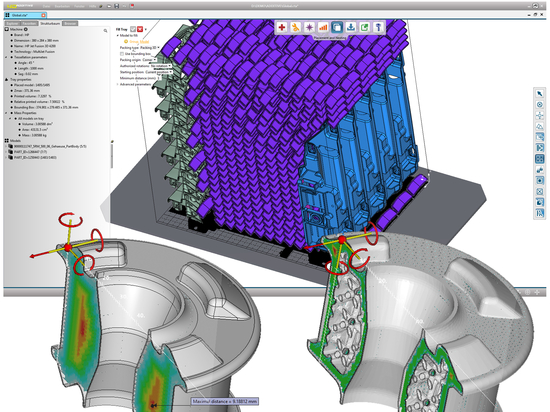
#Industry News
CoreTechnologie on the Latest Update of Their 4D_Additive Software
Everyone should be aware that additive manufacturing is not just about 3D printing itself.
In addition to post-processing, the use of the right software for creating the 3D-printed model also plays a major role. If you are looking into choosing the right modeling software, then you should be aware of certain essential factors. For example, it is important to know in which industry the additive part will be used, what level of knowledge one has about software, or which features are of particular importance to the user. There is a wide range of different software available, one of which is from the German-French company CoreTechnologie, bearing the name 4D_Additive. In the middle of this year, the software provider presented the update of 4D_Additive, but we wanted to know exactly what new features and improvements the update offers for the user himself. We sat down with Rémi Goupil, product manager for 4D_Additive in Germany, for an interview to learn more about this as well as the company’s future plans.
3DN: Could you briefly introduce yourself and your connection to additive manufacturing?
Hello, my name is Rémi Goupil and I am the product manager for 4D_Additive in Germany. In the 3D CAD interoperability market, CoreTechnologie is well known and the leading global provider for 3D CAD data conversion software. Our mission is to optimize interoperability, helping organizations to efficiently share engineering data and to optimize all processes based on 3D data.
Since its founding in 1998, CoreTechnologie bas consistently presented innovative developments and has more than 560 customers that are leading technology companies developing complex products in the automotive, aerospace, mechanical engineering and consumer goods industry. CoreTechnologie is a Franco-German company with a development center in Lyon, France. The head office is based in Germany, near Frankfurt. As a native Frenchman, it was an optimal solution for me to move to Germany to enable a strong connection between our sales team and our development team in France.
3DN: How did 4D_Additive from CoreTechnologie come about?
Four years ago CoreTechnologie decided to look into the booming additive manufacturing market. We recognized that in our view the few established tools available used outdated data formats and methods based on the triangulated STL Format.
Having 20 years of experience in data conversion and simplification, we noticed a unique opportunity that we can create an innovative 3D-Printing-Software based on our own Kernel handling both exact CAD data of all major formats and triangulated data. So we were able to solve the problem of STL ending up with either large files of sufficient quality or smaller file sizes of poor accuracy. Also the capacity of the printers has evolved considerably to gradually integrate mass production. As a result STL file sizes increased dramatically. So the time was ready to introduce exact and very compact CAD files to support large build spaces and also provide a higher accuracy, especially when it comes to the industrial production of parts. This is the main reason for the birth of 4D_Additive. Furthermore, based on our existing GUI concept, we were able to create an extremely easy-to-use software. The 3D printing market is open to everyone and a solution was needed that was suitable for all types of users, while offering high quality parts and more processing power for a serious Additive Manufacturing Process.
3DN: CoreTechnologie released a new version of the software in the middle of this year. What can you tell us about the new features in the 1.4. Update?
The highlight of the new software version is surely the improved nesting functions. Compared to our previous version, the software now offers higher speed, accuracy and packing density as well as further optimized packing distribution. In addition, the software has a new nesting strategy. The new Powercopy nesting function allows for an extremely fast packing of identical parts with a maximum packing density. In addition we integrated the Eosprint 2.0 interface. So now print data can be sent from 4D_Additive directly to EOS machines without detours via other software tools or formats. This makes it possible to read native CAD or STL data, prepare it for the 3D printing process and send the data now also to EOS systems with a single software tool.







